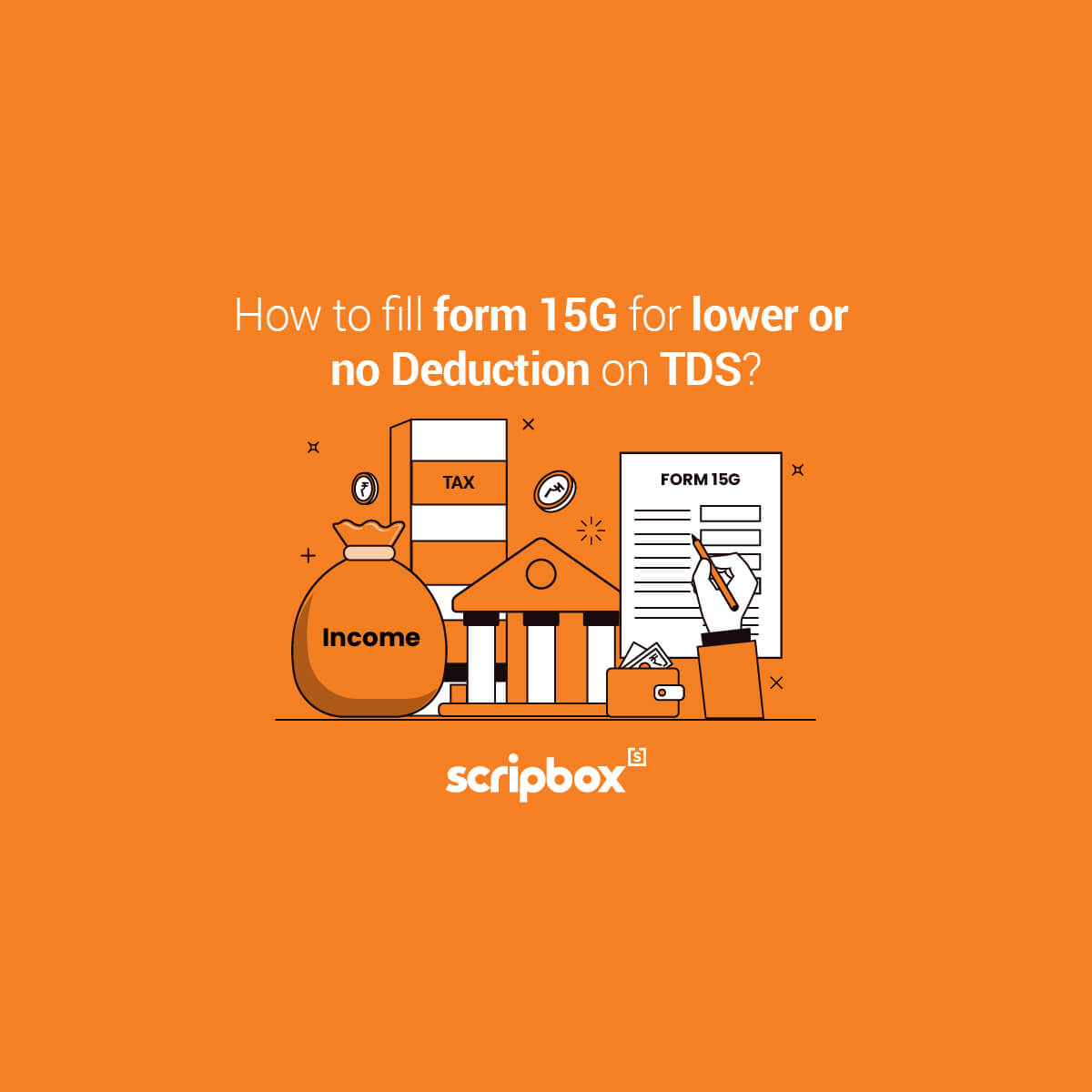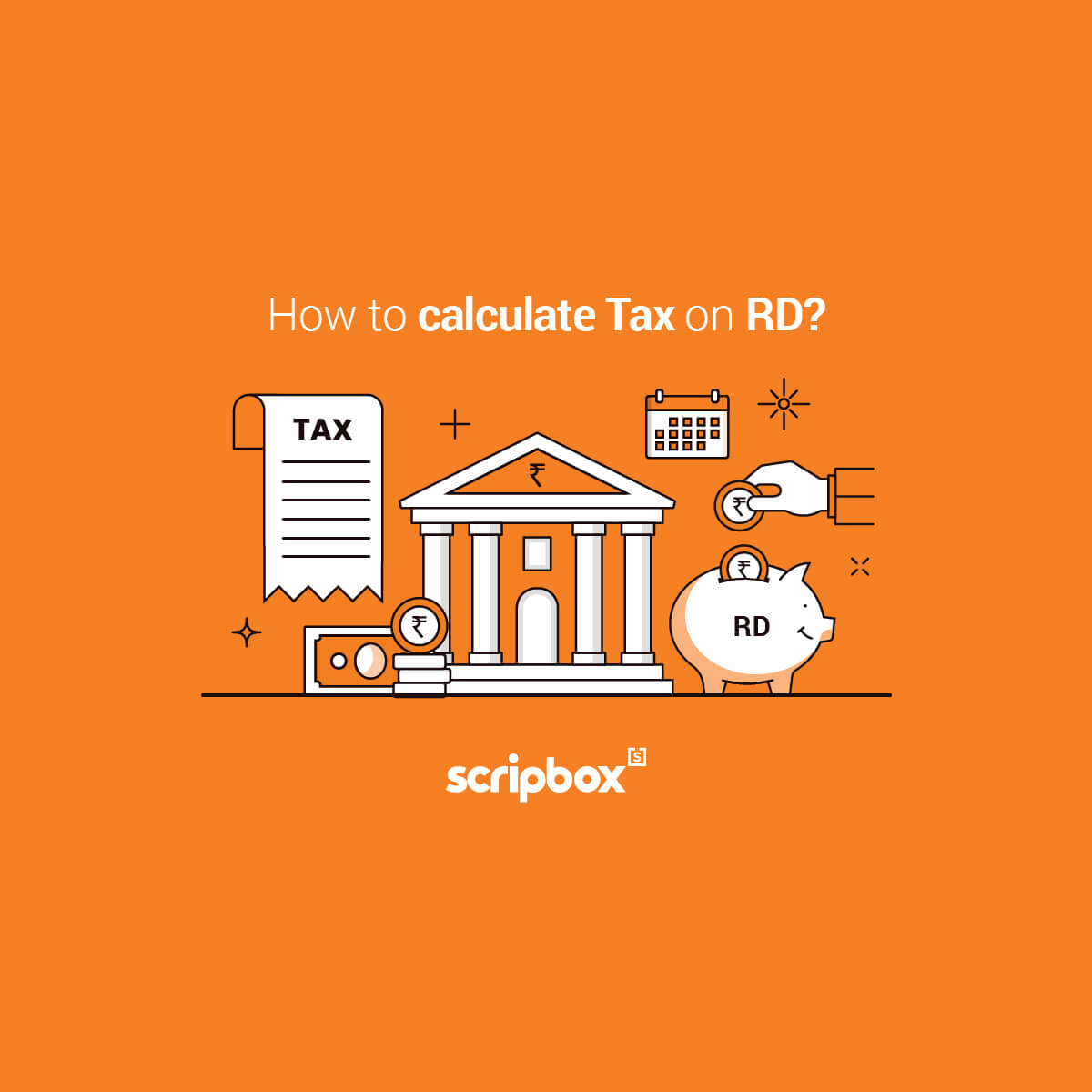ITR 1, also known as Sahaj Form is applicable to taxpayers who have earned less than Rs 50 lakh in the financial year. The income tax department categorizes the taxpayers on the basis of the total income and type of income. Hence, before filing ITR 1 you must know the applicability. In this article, we have covered the applicability and non-applicability. This article will help you know how to file Form ITR 1 online and offline.
Union Budget 2021 proposes to exempt senior citizens from filing Form ITR 1. Such senior citizen taxpayers have only pension income and interest income as their annual income source. Section 194P has been newly inserted to enforce the banks to deduct tax on senior citizens more than 75 years of age who have a pension and interest income from the bank.
Who should file ITR 1 for the assessment year 2020-21?
ITR-1 is applicable to you if you earn an income under any of the following head of income during the financial year:
- Income from salary or pension
- Income from house property (excluding cases where the taxpayers want to carry forward a loss from this head of income)
- Agricultural income up to Rs 5000
- Income from other sources. (excluding any income arising from winning lottery or racehorses)
Who cannot file ITR 1 for the AY2020-21?
ITR-1 is not applicable to you if you satisfy any of the following conditions laid down by the income tax department:
- Income from capital gains
- Income from business or profession
- Total Annual Income exceeds Rs 50 lakh during the financial year
- Income from more than 1 house property
- Agricultural income earned is more than Rs 5000 in the financial year
- The taxpayer has any foreign asset or foreign income
- You are a director in a Company
- You have an investment in unlisted equity shares at any point of time during the financial year
- The taxpayer has signing authority in any account outside India and he/ she is a resident of India
- The taxpayer has any financial interest in an entity outside India and he/ she is a resident of India.
What is the Structure of ITR 1 Form?
Part-A General Information
This section contains general information such as name, PAN number, aadhaar number, date of birth, permanent address, email address, mobile number, and so on
Part- B Gross Total Income
This section contains the gross total income combining income under the head salary, house property, capital gain, business/ profession, and other sources of income. The gross total income is the amount excluding any deduction and exemptions.
Part- C Deductions and Taxable Total Income
Here you need to mention all the investment/ deposit/ payments made for the purpose of claiming deduction under chapter VIA. You need to provide details of all investments and expenses like LIC premium, PPF contribution, tuition fee, medical insurance, NPS, NSC, interest on education loan, etc.
Part-D Computation of Tax Payable/ Refund Receivable
This part includes exempt income, rebate under section 87A, relief under section 89, tax payable along with interest applicable if any.
Part- E TDS and Tax Paid
Part-E includes details of tax deducted at source from salary and income other than salary. It also includes details of advance tax and self-assessment tax payments. You need to provide the BSR code, date of deposit, the serial number of challan, and tax paid.
Part- F Tax Collected At Source
Details of tax collected at source i.e. account number and name of the collector, gross payment subject to TCS, year of tax, TCS collected, claim of TCS.
Part-G Schedule- DI Details of Investments
Part-G includes investments, deposits, payments for the purpose of claiming deduction under Part B of Chapter VIA
Part-H Details of claim to be made under section 80D against medical insurance and expenses
Part- I Details of claim to be made under section 80G against donations
Part- J Details of a deduction for donation for scientific research or rural development under section 80GGA
How to file ITR 1 Form for AY 2020-21 Online?
You can ‘Prepare and Submit Online’ your income tax return by simply adding your details online and submitting it. The ITR will be pre-filled with your details. You need to just check the pre-filled details and add any missing information.
You just need to follow the below-mentioned steps preparation and e-filing of ITR-1 Form
- Register yourself on the incometaxefiling website
- On successful registration just log in to your account by entering your PAN and password
- Click on ‘Dashboard and select the option of ‘Filing of Income Tax Return’.
- Fill in the below details:
- Assessment year – 2020-21
- ITR Form No. – ITR-1
- Filing Type – Original/Revised Return
- Submission mode – ‘Prepare and Submit Online’
- The following details will be pre-filled:
- PAN, name, and date of birth from PAN database
- Address, Aadhaar, Name, mobile number, and e-mail ID from your e-filing profile.
- TDS, advance payment from your Form 26AS
- Salary income, deductions, and allowances from Form 24Q
- House property income from your Form 26AS
- Term deposit interest income from your Form 26AS
- Income tax refund interest income from your Form 26AS
- Tax relief u/s 89 from Form 24Q
- Bank details from last year’s ITR
- Check the pre-filled details and change any incorrect details.
- Check the bank details and ensure those details are correct. If the bank details are incorrect you may have to deal with a delay in the processing of income tax refund.
- After checking all the details you need to select the mode of verification
- Select the option using which you wish to verify your income tax return
- Click on ‘Submit’ to finally submit your ITR.
- After submitting you will be redirected towards verification of ITR.
- Verify your income tax return and track the status of your ITR.
Check Out How to File ITR Online?
How to file ITR 1 Form for AY 2020-21 with Excel Utility?
Every assessee has two options either prepare the ITR online and submit or prepare offline and submit. Under both the submit modes you are submitting the ITR online. The only difference between both modes is preparing the ITR online vs offline. Under this option, you need to download the software utility, fill the form, and upload the utility.
You just need to follow the below-mentioned steps preparation and e-filing of ITR-1 Form:
- Register yourself on the incometaxefiling website
- On successful registration just log in to your account by entering your PAN and password
- Select the option of ‘Downloads’. You will be redirected to the download page.
- Select the assessment year from the dropdown menu
- You can download the ‘Microsoft Excel’ file or ‘JAVA’ utility
- A zip file will be downloaded.
- Let’s say you have downloaded the Microsoft excel file. Open the file and click on ‘enable content’
- The excel file will open up. Now, click on ‘enable macros’
- In this file always remember
- Green cells are for data entry
- Red fields are mandatory to fill
- Do not try to past your data. Do not use cut, and paste i.e. no CTRL X and CTRL V. You can paste any data
- The form has navigation options such as previous, calculate tax, print, and help
- Insert all the data under each tab and click on ‘validate’
- Once you have entered all the data accurately click on ‘generate XML’. You need to upload this file.
- To upload the XML file, login to your income tax account.
- Once logged in, select the option of ‘Filing of Income Tax Return’. This option will appear under ‘Dashboard’
- Fill in the below details:
- Assessment year – 2020-21
- ITR Form No. – ITR-1
- Filing Type – Original/Revised Return
- Submission mode – ‘Upload XML’
- Select one of the stated options to verify your return
- Upload the file
- Now finally submit the return and verify post submission
How to file ITR 1 Form for AY 2020-21 Offline?
You can fill and submit offline ITR-1 in a paper form mentioning the details in the ITR-1 paper form. On submission, the income tax department will provide an acknowledgment. The offline filing of ITR is available only to the following taxpayers:
- An assessee whose age is 80 years or more at any time during the previous year
- An assessee is an individual or HUF whose total income is less than Rs 5 lakh for the financial year. Additionally, the assessee does not have a claim of a tax refund.
Details Required for e-filing Income Tax Return ITR-1 Sahaj
Documents required to file an Income Tax Return
- Bank statement, post office statement, PPF statement to calculate the interest amount. Alternatively, you can also refer to the interest certificates from banks and post offices
- Tax-saving Investment proofs to claim deduction under Chapter VIA of the Income Tax Act, 1961
- Salary slips of the entire employment period.
- Advance tax challan and/ or Self-assessment tax challan, if any to add details of the tax paid
- Form 26AS to know the total TDS amount for financial year. Click here to know all about Form 26AS.
- Form 16 will be provided by your employer. It will contain the breakdown of salary, investment proof given by you to your employer, and TDS deducted
- Form 16A for TDS deducted in respect of any other income such as interest in fixed deposits or recurring deposits
- Form 16B for the TDS deducted by the purchaser of property sold by you
- Lastly, Form 16C for the TDS deducted by your tenant on the rent paid to you. Your tenant will deduct TDS in case the rent is in excess of Rs 50000 per month. Refer to the section here
Terms You Should Know
Revised Return
If after filing your income tax return you have discovered a mistake in the ITR filed then you can re-file your ITR. This is known as a revised return wherein you can revise the already filed tax return. Remember you can revise a return only if you have filed it in the first place.
Notice Number
In case you are filing your income tax return in response to a notice issued by the income tax department then you must mention this number. This number must be mentioned in the income tax return itself
Annexure-Less Return
ITR-1 Sahaj is an annexure-less return. This means you need not attach any documents as a part of any annexure. The income tax department exempts you from attaching any documents such as Form 16, TDS certificates, Form 26AS, donation proofs, investments proofs, etc.
Advance Tax under Income Tax Act, 1961
Usually, for salaried individuals the TDS deducted by the employer is sufficient and they need not pay any advance tax. However, in case the total income includes income from other sources such as capital gains, rental income, interest from deposits, then advance tax is applicable. The applicability of advance tax arises if the tax on total income is more than Rs 10000 in financial year. The taxpayer must make quarterly payments on or before the due date.
Self Assessment Tax under Income Tax Act, 1961
A self assessment tax is a tax that a taxpayer pays while self-assessing his/ her tax on total income. After filling the income tax return you might find tax payable. Here first ensure you have entered the TDS/ TCS and advance tax details in full. You must pay the self-assessment tax and mention the challan details in the income tax return. Always be cautious of the assessment year you choose while making a payment. An incorrect assessment year would mean you have not paid tax for the relevant AY and instead paid for a different AY.
Major Changes Made in ITR -1 for Assessment Year 2020-21
- Resident individual taxpayers who hold a single house property in joint ownership can file Form ITR 1. However, the total income must not exceed Rs 50 lakh for the financial year
- Every assessee must disclose all tax-saving investments, expenses, or deposits separately for the period starting from 1st April 2020 till 30th June 2020
- A taxpayer who satisfies the following conditions must mandatorily file ITR-1. he/ she must also indicate the amount in Form ITR 1.
- Cash deposits exceeding Rs 1 crore during the financial year
- Foreign travel expense exceeding Rs 2 lakh during the financial year
- Electricity expense exceeding Rs 1 lakh during the financial year
Major Changes Made in ITR -1 for Assessment Year 2019-20
- ITR 1 Form is no longer applicable to such assessee’s who are either a director in a company or hold unlisted equity shares
- A clear distinction is made of ITR filed in response to a notice and filed as the regular income tax return is a part of self-assessment.
- Under Part A, the ‘Pensioners’ checkbox has been introduced under the ‘Nature of employment’ section.
- A clear bifurcation of deduction under salary against standard deduction, professional tax, and entertainment allowance
- Detailed information against each income earned under ‘Income From Other Sources’ during the financial year
- The option of ‘Deemed to be let out property is introduced under ‘Income from house property’.
- Introduction of Section 80TTB column for senior citizens.
- Introduction of a separate column under ‘Income from other sources’ for deduction u/s 57(iia) – in case of family pension income.
Major Changes Made in ITR -1 for Assessment Year 2018-19
- The ITR-1 Sahaj was earlier applicable to both Residents Not ordinarily resident (RNOR) and non-residents. However, now the income tax return is applicable to only resident taxpayers
- No change made to the condition for the taxpayers to have a total income of less than Rs 50 lakhs. The source of income can be only income from salaries, one house property, other income.
- Mandatory requirement to report a break-up of income from house property in the income tax return
- Mandatory requirement to report a break-up of salary in the income tax return. Just like the salary income has a break-up in Form 16 similarly it has been mandatory to provide in ITR-1
- Addition of a field under TDS Schedule to report details of TDS as per Form 26QC for TDS made on rent. Further, it is mandatory to mention the PAN number of the tenant.
Frequently Asked Questions
You cannot file ITR-1 Sahaj if the total income is more than Rs 50 lakh. If you are a salaried individual then you must file ITR-2. In other cases, you can file ITR-3 or ITR-4 depending on the source of income. ITR-3 is applicable in case you have income from a business and profession. While ITR-4 Sugam is applicable to the taxpayers who opt for presumptive taxation under section 44AD or section 44AE.
If the capital gain income is exempt under section 10 (38) then you must report in ITR-1. However, if the LTCG is taxable then you must file other forms as applicable according to your income and category.
Yes, you can file ITR-1 Sahaj only if the total agricultural income is less than Rs 5000 during the financial year. If the total agricultural income is more than Rs 5000 in the FY then you must file ITR-2.
Do I need to report dividend income from mutual funds in my ITR?
Yes, you need to report the dividend income from mutual funds. The dividend income is exempt under section 10 (35). In the ITR you must show it under Part D under the head Exempt Income (others).
Recommended Read: How to File ITR 4 Online?
Related Articles
- Confused if your portfolio is performing right enough to meet your goals?
- How long have you been investing in mutual funds?
- What is your current portfolio size?
- What is your approximate annual household income?
- Your profile does not qualify for a call with a Financial Expert.
- Who should file ITR 1 for the assessment year 2020-21?
- Who cannot file ITR 1 for the AY2020-21?
- What is the Structure of ITR 1 Form?
- How to file ITR 1 Form for AY 2020-21 Online?
- How to file ITR 1 Form for AY 2020-21 with Excel Utility?
- How to file ITR 1 Form for AY 2020-21 Offline?
- Details Required for e-filing Income Tax Return ITR-1 Sahaj
- Terms You Should Know
- Major Changes Made in ITR -1 for Assessment Year 2020-21
- Major Changes Made in ITR -1 for Assessment Year 2019-20
- Major Changes Made in ITR -1 for Assessment Year 2018-19
- Frequently Asked Questions
























Show comments